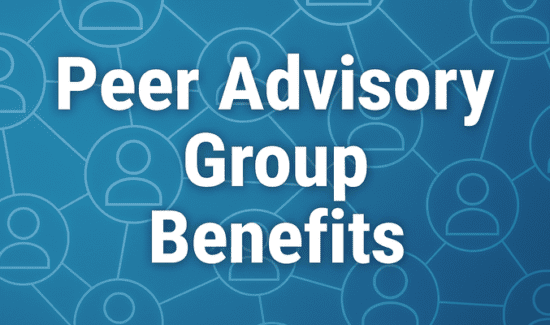Democratizing Generative AI Brings New Possibilities and Requirements for Success

Tom Davis, the AVP of Product Management at Hyland, explains how democratizing generative AI introduces new possibilities—and requirements—for success. This article originally appeared in Insight Jam, an enterprise IT community that enables human conversation on AI.

The growing accessibility—and vast capabilities—of generative AI technologies offer new possibilities for businesses. However, the rapid pace of adoption introduces risks and vulnerabilities, making it even more essential for organizations to work quickly to develop strategies for harnessing these powerful tools responsibly. As generative AI innovation continues at breakneck speed, companies must adapt just as fast to ensure the risks don’t outpace the rewards.
New Possibilities, New Risks
According to the latest McKinsey survey, nearly two-thirds of organizations regularly use generative AI, almost double the number a year ago. Generative AI tools are not only becoming more widespread, they’re becoming more powerful. In March, OpenAI introduced its latest iteration, GPT-4o, which comes with faster and stronger text, audio, and visual capabilities. Google’s Gemini 1.5 Flash—announced just a day later—can quickly summarize conversations, videos, and large documents.
As generative AI spreads, more businesses are unlocking new opportunities and achieving benefits like increasing the speed of software development, detecting fraud, and improving and personalizing products. What was once reserved for only specialized technical experts is now available to a broad spectrum of users. Non-technical users across every part of the enterprise can chat with documents and summarize information, streamline enterprise operations by connecting disparate data repositories, and analyze vast amounts of data more efficiently and effectively.
However, democratizing information access across the organization can open up new security risks and vulnerabilities. A broad population of users may lack the expertise to manage and secure sensitive data properly. In fact, nearly 80 percent of companies cite data privacy and security as their top concern with generative AI.
With generative AI tools becoming more ubiquitous, organizations require better infrastructure, talent, and governance policies to mitigate these risks. As new AI capabilities emerge, the organization’s support systems and structures will also need to evolve—or they risk data breaches and leaks that turn AI possibilities into vulnerabilities.
What Does Responsible AI Look Like?
We’ve quickly moved beyond the initial adoption phase of generative AI. As organizations move to deploy generative AI tools at scale, they first need to focus on building responsible AI processes and practices.
The following improvements are crucial for your organization and employees to develop, manage, and optimize generative AI systems without adding to data privacy, security, and ethical concerns.
1) Strengthen Computing Infrastructure
Eight in ten companies plan to substantially increase their investment in generative AI in the next 6-12 months. However, less than one-third are focusing on improving infrastructure and computing power. With more employees using generative AI for more daily tasks, organizations need to invest in AI hardware and cloud services to handle intensive workloads like computer vision and speech localization.
Companies like Dell and Microsoft are already leading the way with AI-optimized hardware, positioning themselves to meet this growing demand. Cloud service providers like AWS and Azure can seamlessly integrate AI into existing solution stacks, ensuring scalability and efficiency. By investing in the proper infrastructure, businesses can elevate their AI readiness to ensure they are ready to support users as they leverage AI in their daily work.
2) Recruit, Retain, and Uplevel Talent
AI can streamline and automate many tasks but cannot fully replace human expertise. Even as generative AI becomes increasingly ingrained in operations, your organization needs a skilled workforce leveraging the latest AI tools and methodologies. The lack of qualified talent remains a top barrier to implementing generative AI.
To bridge this gap, focus on transforming traditional developers into AI-savvy professionals and increasing AI knowledge and expertise among your broader workforce. This will not only entail recruiting the right talent to your organization but also training and upskilling existing employees. Creating new roles, redesigning work processes, and bolstering AI skill sets and expertise among employees will increase their practical knowledge about ethical guidelines and best practices for AI. This proactive approach minimizes potential misuse and enhances your workforce’s ability to responsibly harness the potential of generative AI.
3) Adopt Robust AI Governance
With pressing concerns about data privacy, security, and the potential for AI bias, organizations need clear policies around AI development and deployment. But it’s concerning to see that few organizations currently have robust governance practices in place: Only one in four employees say their employer has a policy governing the use of generative AI, one in five organizations have an enterprise-wide council/board to make decisions about responsible AI governance, and one-third require risk awareness and risk mitigation controls as skill sets for technical talent.
Establish robust AI governance policies and practices around critical areas such as bias prevention, model explainability, and transparency. It’s crucial to develop policies with comprehensive legal and ethical considerations and communicate them transparently to all users across your organization. Likewise, regular audits and assessments can identify potential issues early and ensure compliance with governance standards.
The AI Race is Heating Up
The race to generative AI success is both a marathon and a sprint. In the short term, you need robust infrastructure, skill sets, and policies to enable AI adoption and ensure everyone across the enterprise reaps the benefits of these tools. In the long run, you must adapt to newfound AI capabilities and align these tools with broader strategic goals, ensuring AI initiatives add tangible value and advance long-term success.
We’re still in the first leg of the AI race, but the pace is starting to pick up speed. Are you ready to hit the ground running?




